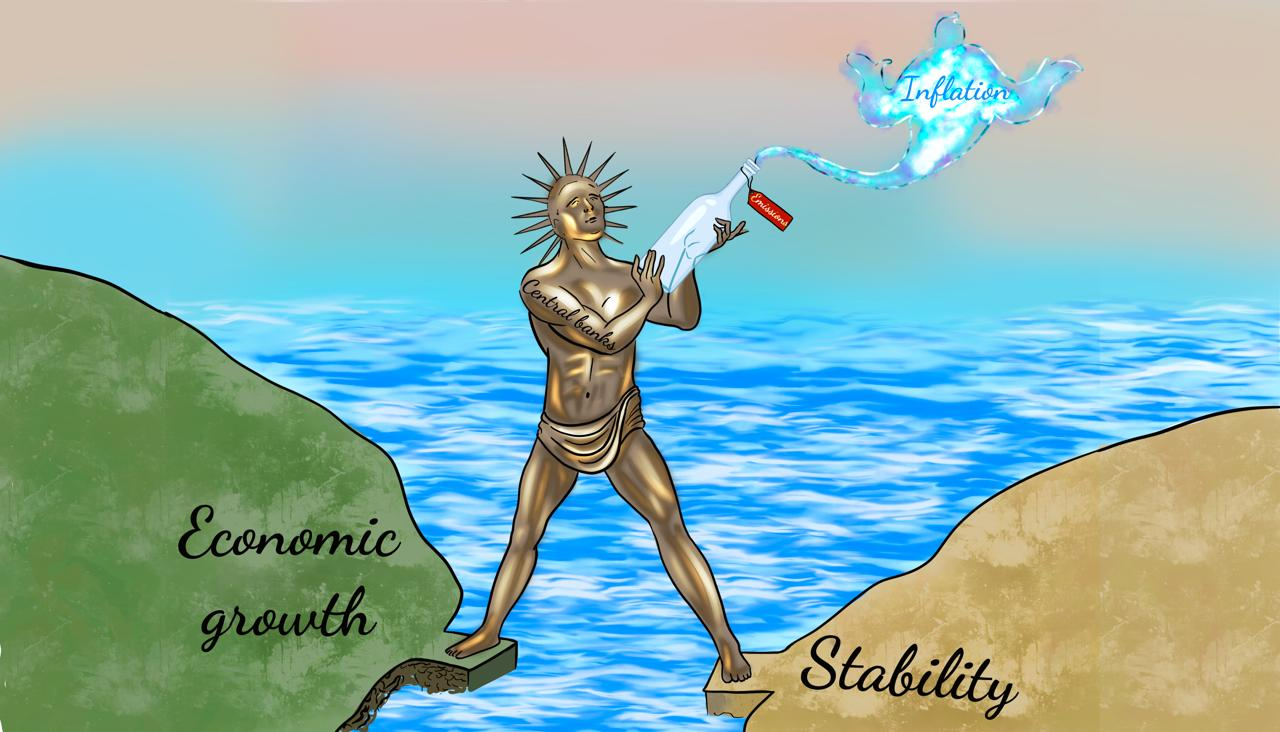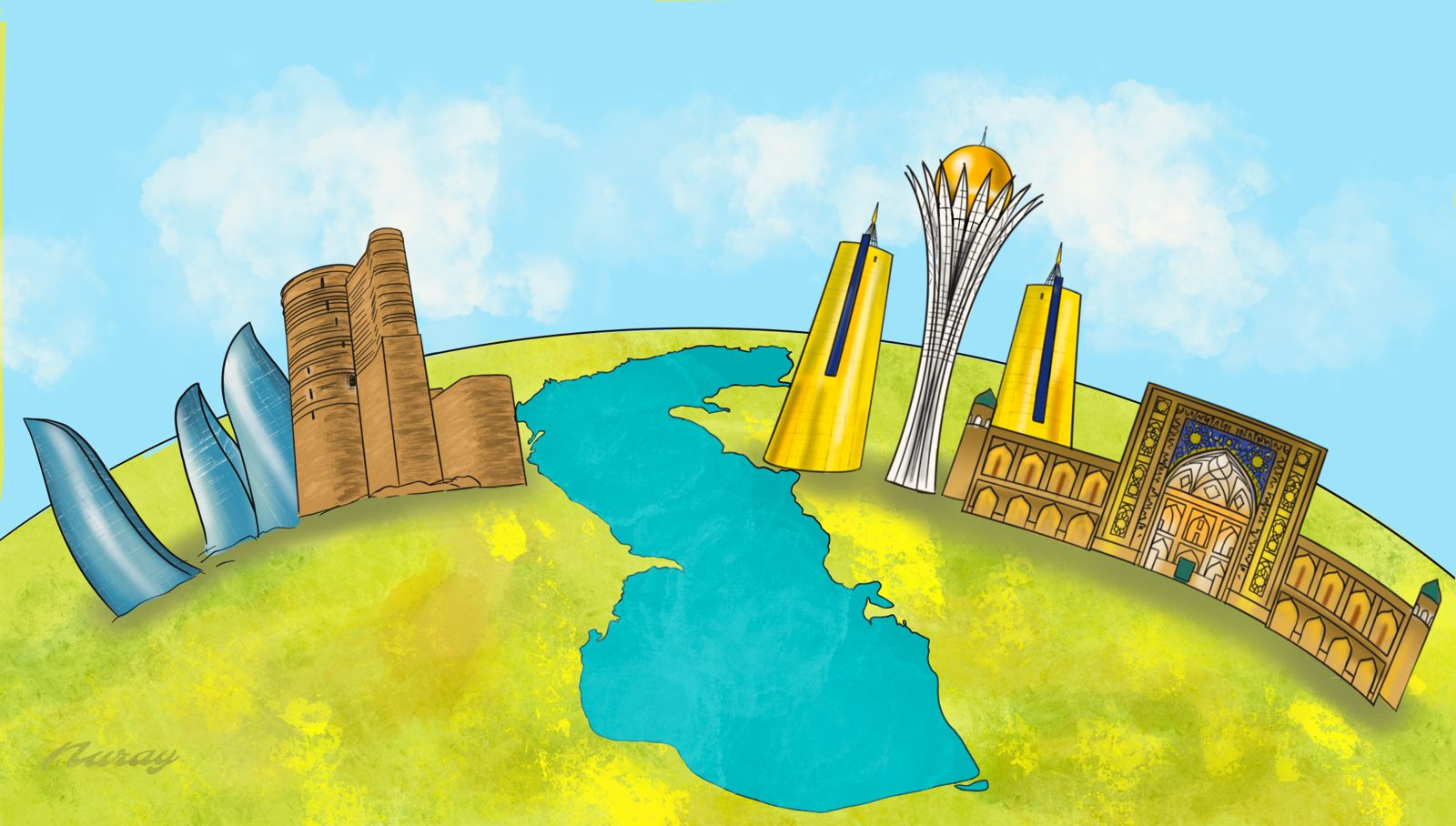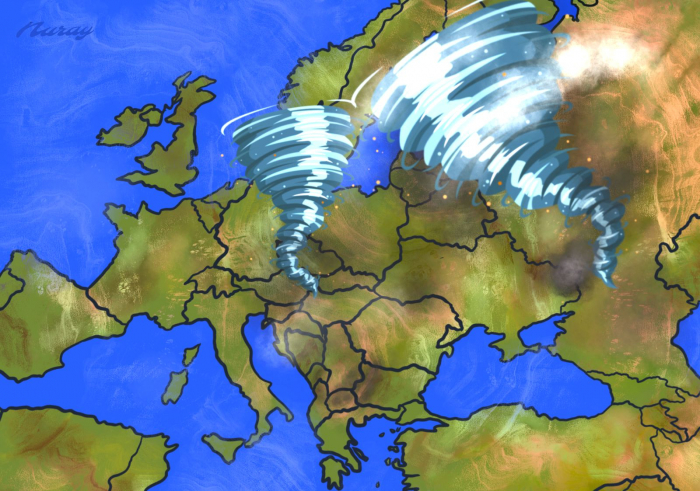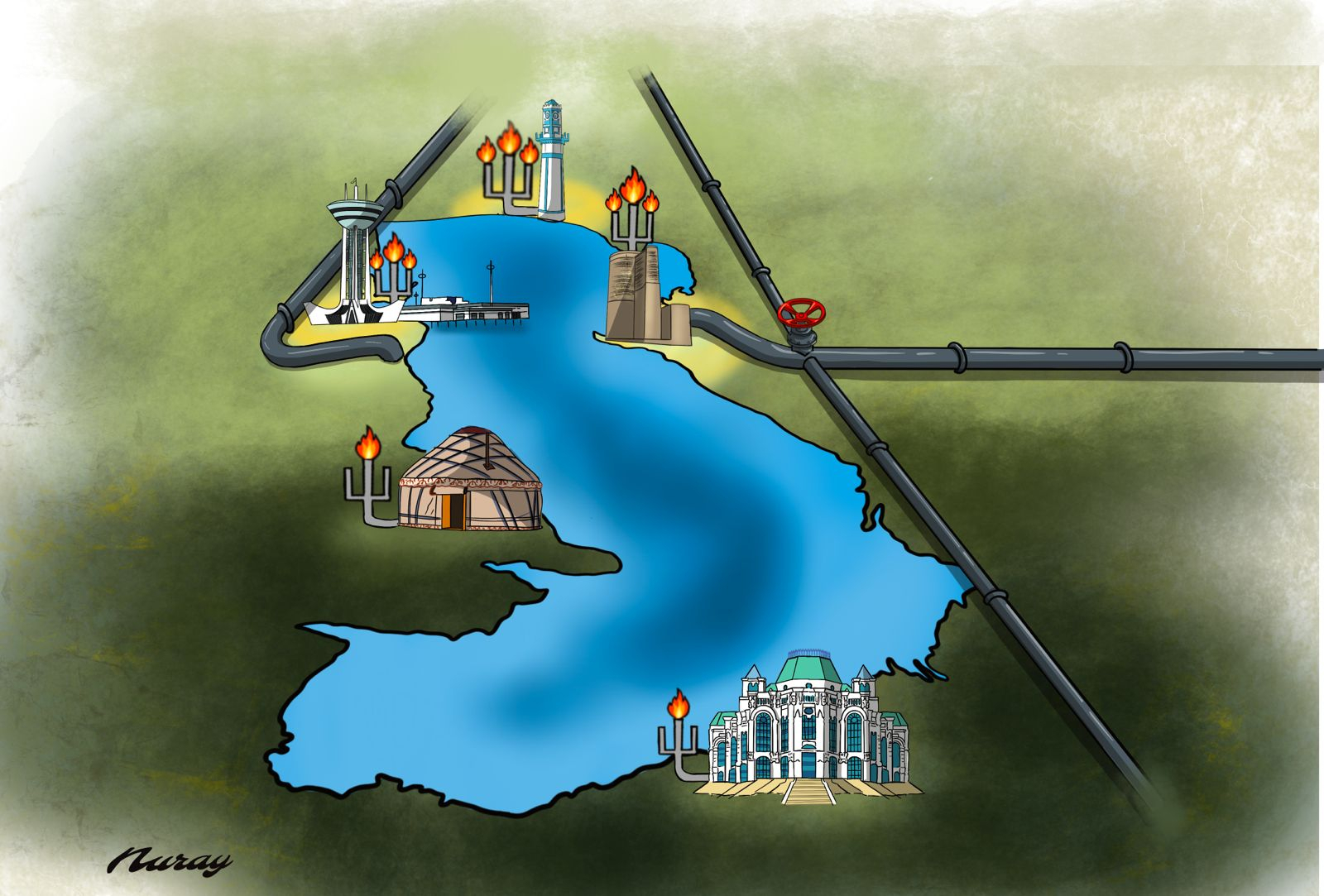
| The Analytical Group of AzVision.az |
Middle Corridor: What is the Diagnosis? | Long Read// The symptoms are there, but with no grave illness |
|
T
he World Bank foresees an overall increase
in trade between China and the EU by about 30 percent by 2030, should there be
suitable logistics and transport conditions. Nonetheless, the prognosis
requires having a well performing corridor to turn into reality. China and
Europe are located on different ends of the world with whopping 9 thousand kilometres
between them. Finding a new transport route to circulate goods between these
two addresses has become a focal point for the entire world. Although the
Middle Corridor is considered a favourite, the World Bank experts see numerous
challenges in operating it. How true are these claims and what can we do to
eliminate the shortcomings? We’ve recently been
observing a steadily growing demand for a new route between China and Europe,
but there were leaps at two stages that especially stood out. The first one
happened as Russia had to face Western sanctions and the North Corridor
closed down when the Ukraine war broke out. The sea routes had to shoulder
the burden of goods traffic between the east and the west as a result. The
second stage occurred as the Yemen Houthis got more involved in the Red Sea as
military operations unfolded in Gaza. Their attacks on ships became a
serious threat for the sea route through the Suez Canal, once again
highlighting the urgent need for a reliable land route from China to Europe. |
||
 |
||
| Manipulative information about the Middle Corridor is ever growing |
It looks as though an
information war has broken out over the Middle Corridor. Operating the corridor
at full capacity and turning it into the main traffic route between China and
Europe in the future will stimulate development and boost geopolitical
importance of the countries along it. Unfortunately, there are interest
groups who do not want that to happen. They see discrediting of the MC as
an element of the ‘hybrid war’ waged against the stakeholders of the project. Some
centres under the influence of these groups deliberately accentuate the
possible problems rather than the advantages the corridor has to offer. How
serious are the said problems? AzVision.az has tried to answer the
question. Global or a
‘Regional’ Project?! World Bank’s report called the ‘Middle
Trade and Transport Corridor. Policies and Investments to Triple Freight
Volumes and Halve Travel Time by 2030’ lists the following as hindering
problems for the project: · Lack of corridor coordination and management among
countries, · Poor operational efficiency of the ports on both the Caspian
and Black Seas, · Problems on railways end-to-end infrastructure, specifically
delays at border crossing points, · Lack of a uniform regime and integrated
transport solutions among the countries,
· Too much paperwork and low digitization at
border crossing points. |
|
 |
||
| The time required to cover the distance between the points along the Middle Corridor (in 2022 and 2030) |
World Bank experts
believe that traffic capacity at the MC has hit its absolute ‘ceiling’ due to
these bottlenecks, reversing the effects. Container traffic decreased by 37% in
the 8 months of 2023 compared to the same period in 2022. Having summarized all
the problems, the report authors have reached a conclusion that the MC will be
a regional project that also occasionally transports transcontinental goods
rather than a global route. Over 60% of cargo traffic along the corridor will
run among the regional countries in 2030. Kazakhstan, Azerbaijan, and Georgia
will account for the main growth. The MC will largely be dominated by
Kazakhstan’s exports. It will handle a little over 5% of EU-China trade by
2030. The experts at the World Bank thus want to articulate that unless the
required reforms are put in place, the MC has reached its capacity in terms of
China-Europe cargo transportation. |
|
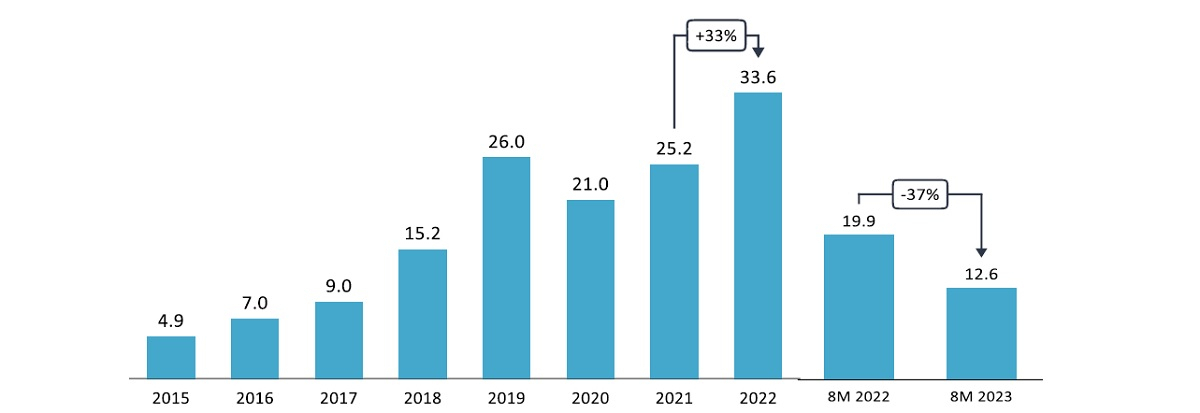 |
||
| Dynamics of goods transported on the Middle Corridor. Source: World Bank report |
But how accurate is
this approach? Are the problems raised by World Bank experts for sake of ‘diagnosing’
in fact as grave as they claim and what do we need to do to solve them? Diagnosis and
Treatment
‘This project, called
the Trans-Caspian International Transport Corridor, is a strategic transport
route connecting China with Europe through Central Asia and Azerbaijan. With a
multifaceted significance for the region and Europe, the project will have a
profound impact on economic development, political stability, and cultural
cooperation’, Ms. Qi says. She says the corridor
offers a shorter alternative route to European markets compared to the
traditional sea routes, thus significantly cutting delivery times. It also
produces new partnership opportunities between Europe and countries along the
corridor, thus creating a large field of political and economic cooperation
on the continent. It allows Central Asia to export goods and natural resources
to European markets and attract foreign investment. At the same time, it
would not be accurate to consider the MC a transport route only. It
greatly serves the formation of new economic dynamics, deepening of mutual
cultural relations between Asia and Europe, and overall development of
stakeholders. Problem 1: Ports
While discussing the problems raised by the World Bank
report, Elshad Mammadov, professor of Economics, says the approach on economic efficiency is not
groundless. He believes the tariffs at Georgian ports are too high and
competitive. There is a need to apply flexible tariff mechanisms. Otherwise,
the Middle Corridor might not be able to bear the pressure of the competitive
conditions so habitual in the field of transport and logistics. |
|
| Elshad Mammadov: ‘A flexibly tariff policy and other stimulating measures, quotas and concessions can eliminate all problems.’ |
‘The tariff policy is
currently not very efficient. We must apply other mechanisms that would boost
dividends for the MC stakeholders and progressively develop freight transportation’,
professor insists. Azerbaijan owns up to
its shortcomings, while taking operative steps to eliminate them. Alat seaport
reports that they are hard at work to up the annual capacity from 15 million to
25 million tons of cargo and reception capacity from 100 thousand TEU containers
to 500 thousand. The second phase of the project will launch this year. The
investments in the port starting 2023 are all related to these measures. The
countries are carrying out joint projects between the Aktau-Kuryk-Baku and
Poti ports to coordinate operations at these ports. Problem 2: Border
Crossing Points
The more countries a route crosses, the greater the
delay along it because every
country enforces its own bureaucratic procedures. They have different customs
infrastructure and digital indicators at checkpoints. Some of the factors complicating the bureaucratic
procedures include the multi-modality of cargo traffic and
transportation, such as land, railway, and sea transport all in a single
corridor, and engagement of several institutions within one country. Speed
along the corridor will wholly depend on how effectively the countries apply
innovative solutions and digitalization. |
|
 |
||
| Time comparison among the MC points. The least amount is wasted in Azerbaijan. |
Kazakhstan is a member of the
Customs Union and Georgia of the World Trade Organization, while Azerbaijan is
a member of neither, which translates to states with three different
economic models. Stakeholders must introduce coordination, uniform tariff,
and simplified customs systems. The problem does not lie within a single
country. The multitude of countries and variety of tariff regimes within their
territories complicate the matter at hand. Meanwhile, Azerbaijan, Georgia,
and Kazakhstan launched a joint logistics company in June 2023 for a better
synchronization. The MC will naturally not become fully functional
should the countries not deal with these issues, hog the blanket, and
prioritize their personal interests, and not simplify document flow and customs
regimes. That being said, Azerbaijan and Türkiye have coordinated efforts with
Central Asia in recent years, working intensively on discussing bilaterally
and multilaterally the potential problems that might arise in the MC, switching
to a simplified customs system, centralizing management, applying digital solutions,
and building uniform inspection and tariff systems. Economy expert Khalid Karimli says in his interview to
AzVision.az that no one is denying the
complexity of these projects but proactive and systematic efforts by Central
Asia, Azerbaijan, Türkiye, and the Organization of Turkic States will lead to
the solution of the issues raised by the World Bank.
‘The WB report points out that the rapid solution of
these issues will dramatically boost the transmission capacity of the MC. The
corridor will also be one of the most cost-effective routes to deliver goods
from China to Europe. The problems have been identified and there is will and
determination to solve them. The heads of state and government, ministers of
foreign affairs, of communications, and transport across the countries are hard
at work. They are establishing commissions and are quite active.’ |
|
| Khalid Karimli: ‘We can solve the common problems together’ |
The solution of the mentioned challenges has
naturally never been a task for a single country to tackle. These are
issues to be addressed within mutual agreements. The countries recognize this
necessity, take consistent systematic steps, while planning to benefit from
modern technologies, which shows that a centralized and simplified solution of
the possible bureaucratic obstacles on the MC is quite achievable. Azerbaijan is currently employing innovative
approaches in digitizing customs infrastructure and checkpoints. This practice
must be adopted by other countries as well. If they do not have enough
resources to address it, regional investment centres can be a solution. There is No Problem That Cannot Be Solved! Experts from Kazakhstan, one of the crucial links on
the MC, also admit to the problems, while saying they are completely solvable. Magbat
Spanov, Professor at Kazakh National University, Expert at the Institute of
Innovative Economics says in his video interview to
AzVision.az that issues regarding port and railways
infrastructure and cargo handling mechanisms need solving. Building specialized information centres, pooling
efforts, digitizing the economy and transport logistics can eliminate the
problems and accelerate cargo delivery. Transport
infrastructure issues also need to be addressed. The key factor in achieving
the targets mentioned above is not merely words, but common will and desire.
‘The strategic positions of countries within the MC
depend on the resources required. The Middle Corridor is thriving thanks to
those resources. For instance, expanding the railway line in Kazakhstan is an
important prerequisite for a faster goods transit from China to Europe. Such
decisions prompt all the countries within the OBOR project to act and invest in
the project’, the expert emphasized. |
|
| Magbat Spanov: ‘There is both will and desire to solve problems’. |
Kazakhstan and
Azerbaijan are the locomotives in the MC project. The routes in these two
countries are easier as they run through plains. Outstanding works have been
done over the years to boost both the attractiveness and the capacity of the
route. Kazakhstan has built Zhezkazgan and Beyneu-Shalkar stations and the
Kuryk port to shorten the route running from the east to the west of the
country and expand railway construction. Azerbaijan has
modernized the railway in its territories and is now working on switching to
an alternating current, which translates to a cheaper shipping by 20%. The
railroads used to run on direct current in the country. We have acquired 40
modern AC electric locomotives. The driver crew in these locomotives can handle
500-600 km without a change. The crews used to shift every 200 kilometres. Georgia, a
mountainous country, is another link on the MC. Road projects running
through mountainous terrains are both pricier and more time-consuming
compared to plains. Nevertheless, Georgia has seen heavy investing in its
transport sector. For example, Chinese companies are building a highway
through the Rikoti Pass. Despite the complex mountainous-forest terrain,
they are restoring the Marabda-Kartsakhi road. The most important
project, however, is the construction of the Anaklia Port, where Georgia
state will own 51% of the shares, and Chinese companies the remaining 49%. All these projects
will boost the cargo traffic capacity on the railroads of the country to 48
million tons. Information War
The Middle Corridor is such a big project that minor
technical and logistical challenges can in no way diminish its significance. Rauf
Aghamirzayev, a transport and logistics expert, goes into detail on the
issue in his videocast with AzVision.az. He pointed out several manipulative aspects in
statements on the Middle Corridor. He believes there is a competition among various
routes, while very complex events are unfolding in our region. This competition
at times seeps into the media landscape. ‘We must be ready for it. Azerbaijan
and other stakeholders must constantly step forward with counterarguments and
promote the corridor more aggressively’, the expert explained. |
|
| Rauf Aghamirzayev: ‘We must be ready to defend the Middle Corridor from information attacks.’ |
Rauf
Aghamirzayev
finds it crucial to remind the information manipulators of one important point:
bureaucratic factors play a regulatory role when the corridor is not fully
built. ‘We can switch to a more facilitated regime when the ways are fully
completed, and the ports are fully functional in all countries. Building
infrastructure is not something simple that only requires a certain decision; it
needs time. Say, we
have all simplified the procedures, but if Azerbaijan and Kazakhstan have ready
infrastructure at hand, but Georgia doesn’t, the cargo will pass easily through
our two countries and eventually be stuck in Georgia. Bottlenecks must first be
tackled. Several projects will most likely be delivered this year, thus
simplifying bureaucratic challenges, and providing for smoother transitions. If
the infrastructure isn’t ready, simplifying the process might make matters
worse. As more cargo arrives, getting stuck at some point, it will produce the
opposite effect,
which translates to correlation. Say, Georgia does not boast the same potential
as Azerbaijan or Kazakhstan. One is the locomotive country in South Caucasus,
whereas the other is of Central Asia. Georgia, however, lives a different
reality when it comes to both financial and natural resources. Despite all
this, I am still quite optimistic about the project. The Baku-Tbilisi-Kars
project will also launch next spring, which will open new doors’, the expert stated. The
Zangazur Link
There
could be one other way to diversify the Middle Corridor. Western think tanks do
not want to consider it for some reason. The World Bank report does not even
mention the Zangazur corridor, whereas implementing the project can largely
affect cutting time and costs while transporting goods on the MC. |
|
 |
||
| Zangazur Corridor may become an important branch of the Middle Corridor |
Azerbaijan
has done a lot in this direction these past three years. Accessing Nakhchivan
will translate to rearranging the transport map of the region. The reason
that makes the Zangazur Corridor so unique is that it provides a shorter access
for Central Asia to the Mersin Port, as Nakhchivan is located at a
crossroads. Julfa
has historically been a junction for accessing the Persian Gulf. It was
announced late last year that the Kars-Igdir-Sadarak road would also be built
and commissioned over the following 5 years. This means that as the Zangazur
corridor launches into operation, it can stimulate traffic boost on the Middle
Corridor. Conclusion
The
route called the Middle Corridor does indeed have obstacles that prevent
fast and cheap transportation. But they are mostly in place as the corridor
is not fully functional, with some infrastructure problems along the route. A
uniform transport mode along the corridor will become possible as they are
fully built and commissioned, with no further difficulties, because the
stakeholders are personally interested in it. All in
all, the Middle Corridor is the best option for cargo transportation between
Europe and China. Meanwhile, there are powers wanting to overshadow the
prospects of the corridor for subjective reasons. They are either doing it
to lobby for an alternative route or they do not want to see the MC countries
grow stronger. Therefore, they are trying to paint a contorted picture of
the prospects of the corridor through spreading manipulative information.
This means that the MC needs protection on the media landscape and the MC
stakeholders must pool efforts in this direction. If
Western institutions are indeed so concerned about it, they can support and
allocate funds to build infrastructure in Georgia, the closest participating
country to them, very similar to how Azerbaijan is currently helping Georgia to
complete the Baku-Tbilisi-Kars project. The cargo traffic capacity will be
upped to 5 million tons as this road becomes fully operational.
The Middle Corridor is rationally the best option for
all parties. There is no real alternative which is both serious and beneficial
to all. Economics, above all, is a science of rationality. |
|








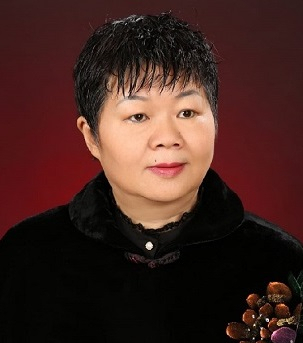 ‘The Middle Corridor
is by no means a regional project, because it will become a key portion of
China’s global One Belt One Road initiative’,
‘The Middle Corridor
is by no means a regional project, because it will become a key portion of
China’s global One Belt One Road initiative’, 

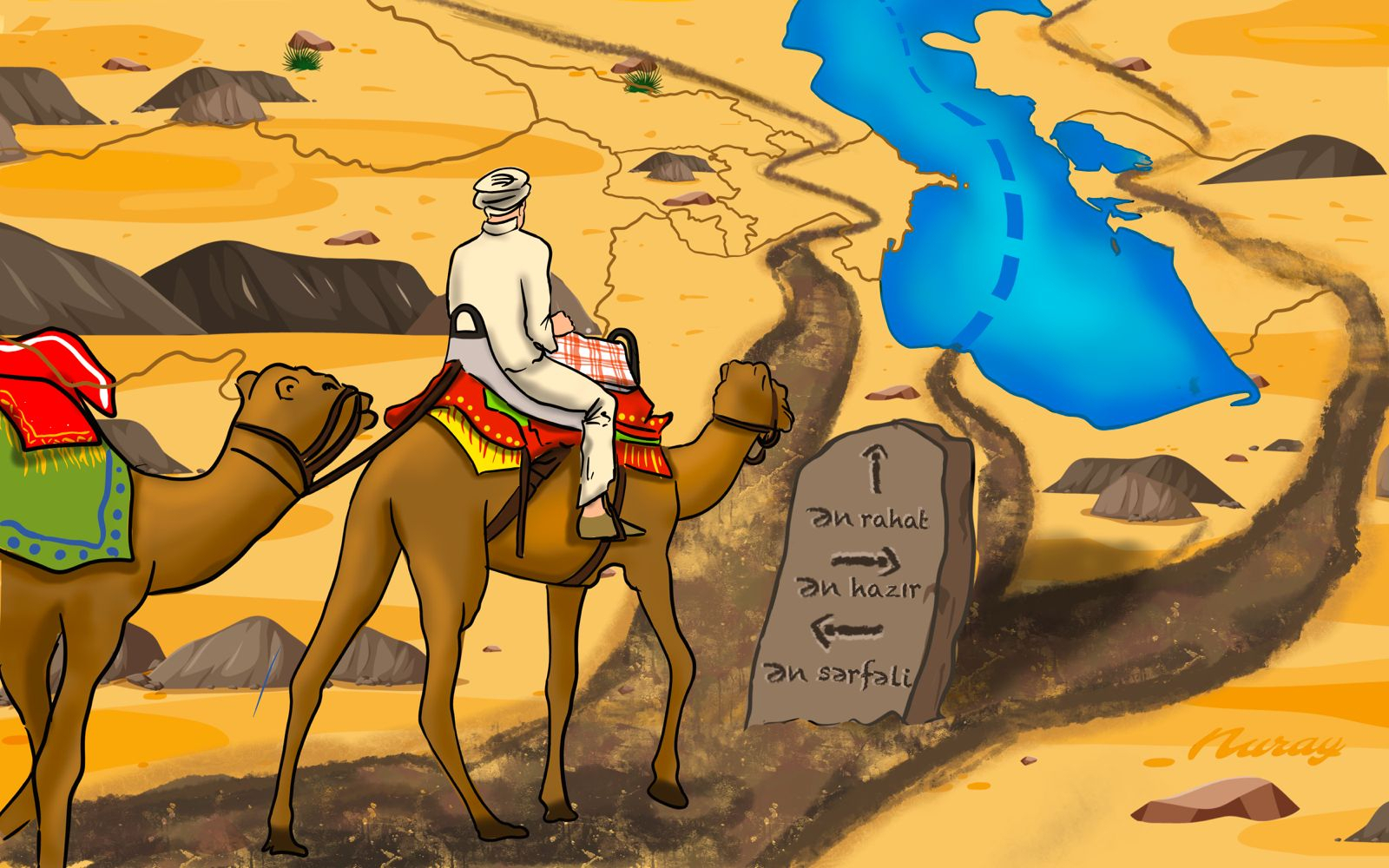

-1680010126.jpg)



